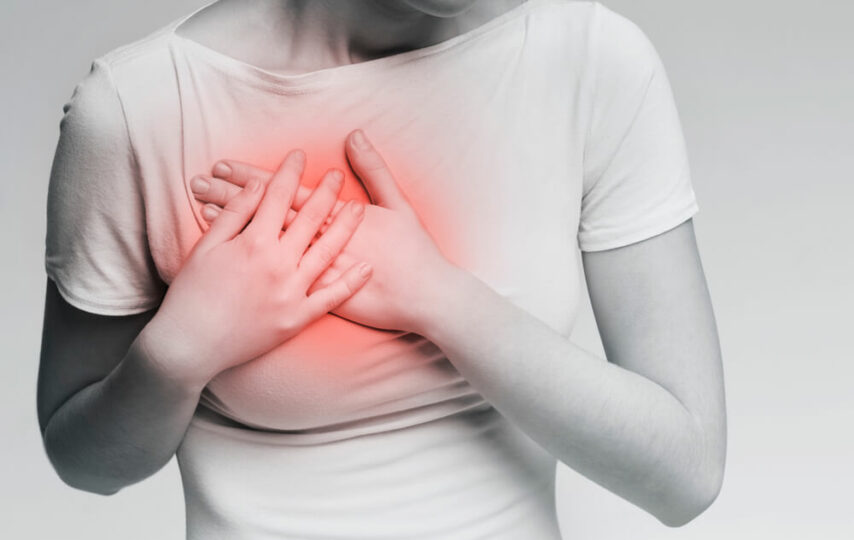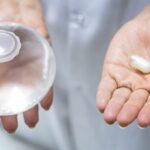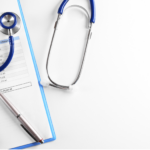Breast infection, commonly known as mastitis, can occur in breastfeeding women. The infection usually occurs within the tissue of the breast. This is due to the bacteria from the baby’s mouth entering and infecting the breast.
Mastitis can also occur in women who are not breastfeeding, but it is relatively not common.
The infection usually affects the fatty tissue in the breast, which causes lumps, swelling, and pain. Thus, most of the infection is due to clogged milk ducts, and a small percentage of breast infections are associated with rare kinds of breast cancer.
In this article, you will explore breast infection in detail, including symptoms and preventive measures after diagnosis.
Symptoms Of Breast Infection
The following are the symptoms of breast infection and this includes;
- Discharge from the nipple that contains pus.
- Warm breast
- Itching.
- Burning and pain sensation while breastfeeding.
- Abnormal swelling.
- Chills.
- Painful lump in the breast.
- Feeling rundown and ill.
- High fever.
- Skin redness.
- Enlarged lymph nodes in the neck or armpit region.
Steps To Take After Diagnosis Of Breast Infection
These are some of the steps that you should follow after diagnosis of breast infection.
1. Include Lymphatic Drainage
If you are diagnosed with breast infection, include lymphatic drainage. This procedure would be a gentle, light pressure on the breast towards the lymph nodes above the collar bone and in your armpit.
This procedure will help you reduce the swelling through the moving fluid. Hence, this is not as strong of a pressure as a massage.
Moreover, the circulation in breast tissue will help you regulate the local fluid balance and filter out harmful substances. If you wish to consult professionals, then you can consult Thomson Medical and learn more about the preventive measures after diagnosis of breast infection.
2. Get A Mammogram Or Breast Ultra-Sound
Treatment for breast infection includes reducing pain and inflammation of the infection from occurring. If you encounter any abnormalities in future courses, do not hesitate to undergo a mammogram test or a breast ultrasound.
Your healthcare professional will do a physical examination and check the symptoms to make a diagnosis. If you are breastfeeding, then go for a mammogram to examine the different changes in the breast condition.
3. Take Medication And Make Regular Consultation
You can use over-the-counter nonsteroidal anti-inflammatory drugs to reduce pain and swelling.
However, you should not delay taking your medicines as the doctor prescribes. The antibiotics will help you relieve pain and swelling.
You can undergo RPS or reverse pressure softening. This massage reduces the swelling in the nipple and areola by moving the fluid away. Furthermore, this will allow your baby to latch more easily to full breasts.
You can also do this all by yourself. To perform RPS, place two fingers around the base of the nipple and apply pressure, then drag the finger away from the nipple.
4. Avoid Wearing Tight Fitted Innerwear
Since the lymphatic vessels are very thin, they get extremely sensitive to pressure and can easily be compressed.
Usually, doctors and healthcare professionals state the major reason for infection is due to tight bras. This is usually bad for health and might restrict the lymph flow in your breast.
Therefore, wear a supportive and well-fitted bra and make sure it is not too tight.
5. Avoid Using High Corrosive Substance
Avoid using hydrochloric acid as it is a clear poisonous liquid. Similarly, before using any body lotion or cream, read the description of the chemicals and then apply.
Take Proper Preventive Measures After Diagnosis
Treatment for breast infection can often depend on the underlying cause and severity of symptoms. Thus, it is vital that you receive early treatment to prevent complications.
If any bacteria are causing the infection, then doctors usually prescribe antibiotics. Furthermore, you should take a full course of antibiotics even if they start to feel better before the completion of your treatment.
Remember, warm compression can help you relieve mastitis pain. You can also include antibiotics to treat the infection and ibuprofen to reduce inflammation and pain.








